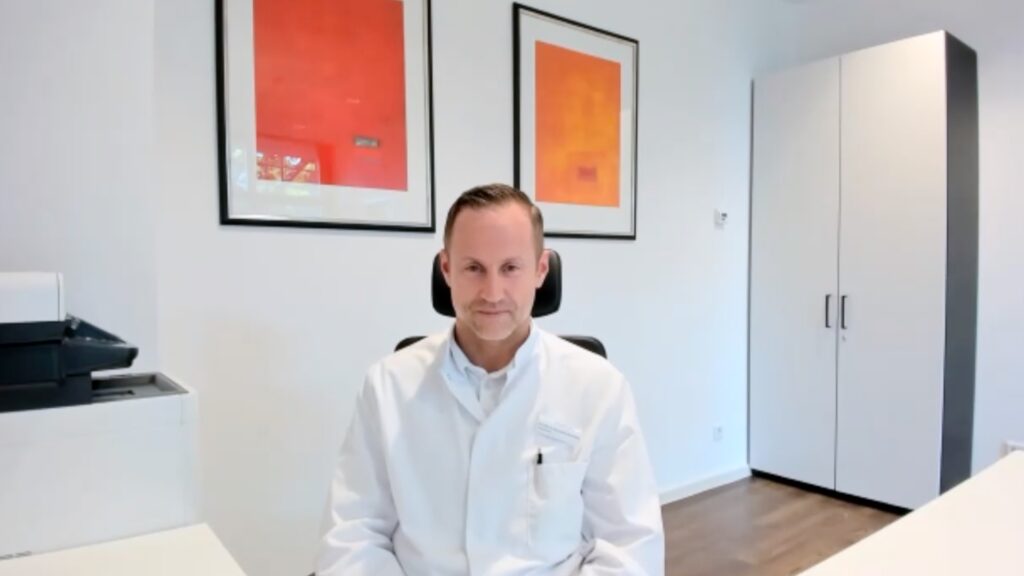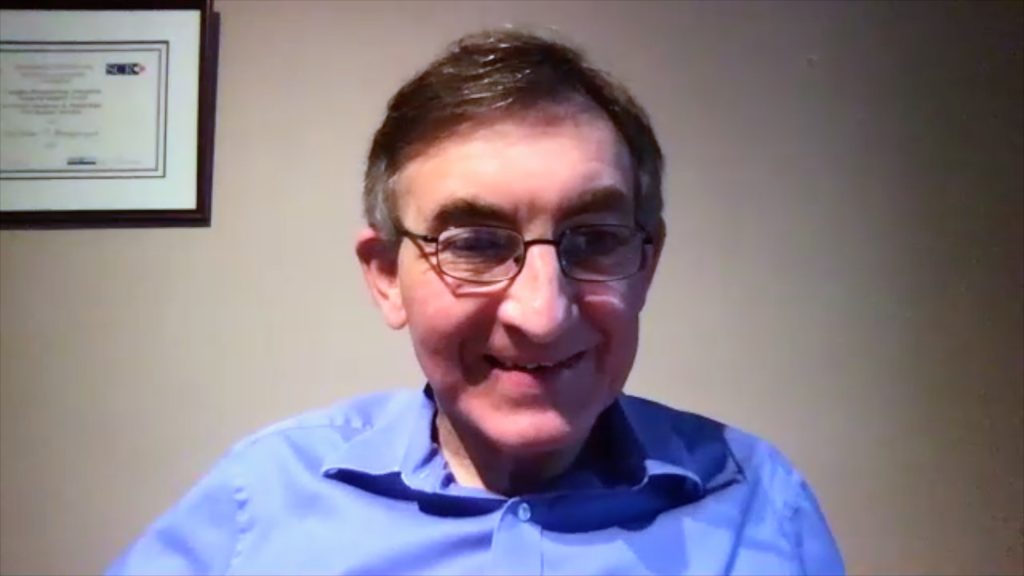Axial spondyloarthritis is a chronic, inflammatory rheumatic disease that affects the axial skeleton, causing severe pain, stiffness and fatigue. touchIMMUNOLOGY were delighted to speak with Dr Fabian Proft (Charité Universitätsmedizin Berlin, Germany) about the treatment paradigm and unmet needs of axial spondyloarthritis.
The abstract ‘Bimekizumab Maintained Stringent Clinical Responses Through Week 52 in Patients with Axial Spondyloarthritis: Results From the Phase 3 Studies BE MOBILE 1 and BE MOBILE 2 Poster‘ was presented at the European Alliance of Associations for Rheumatology (EULAR), 31 May – 03 June 2023.
Questions
- Could you give us a brief overview of the treatment paradigm for axial spondyloarthritis and are there any unmet needs? (0:28)
Disclosures: Fabian Proft discloses consultancy fees and speakers bureau from AbbVie, AMGEN, BMS, Eli Lilly, Hexal, Janssen, Medscape, MSD, Novartis, Pfizer, Roche & UCB and research support from Novartis, Eli Lilly and UCB.
Support: Interview and filming supported by Touch Medical Media Ltd. Interview conducted by Shanice Allen.
Filmed in coverage of the European Alliance of Associations for Rheumatology (EULAR) Annual Meeting
Click here for more content from EULAR.
Transcript
Hello everyone! My name is Fabian Proft, and I’m a rheumatologist working at the Charité University Hospital in Berlin, Germany and it is a pleasure for me today to speak about the abstract that I just recently presented at the EULAR 2023 in Milan.
Could you give us a brief overview of the treatment paradigm for axial spondyloarthritis and are there any unmet needs?
So, if we have the correct and hopefully early diagnosis of a patient with axial spondyloarthritis, key elements of the first-line treatments are education of the patient, regular physical exercise, physiotherapy, also patient education about general healthy behaviours, and their personal lifestyle, like having a normal body weight, having a healthy diet, exercising a lot, stop smoking (smoking is very important – to cessate smoking), or hopefully, also at least reduce it. And then, also nonsteroidal anti-inflammatory drugs if the patient is symptomatic. But if these first-line modalities show failure of efficacy, then it’s very important to escalate the patients quite quickly to a more advanced therapy. And currently, according to the ASAS-EULAR recommendations, this would be either with an IL-17i inhibitor, a TNF inhibitor, or a JAK inhibitor, while current practice is stated in the ASAS-EULAR recommendations to start with a TNFi or IL-17 inhibitor. But when looking at real-world data from axial spondyloarthritis cohorts all over the globe, we can see that only roughly 50% of the patients are reaching the treatment target that we set of having inactive disease or remission of their axial spondyloarthritis. This highlights the current unmet need and the treatment armamentarium of axial spondyloarthritis, making new compounds new modalities utterly needed.
Subtitles and transcript are autogenerated.













